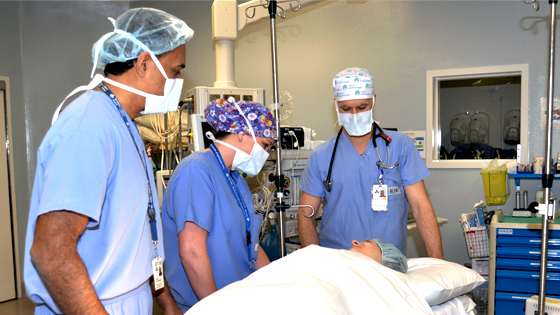
The Ottawa Hospital (TOH) has reorganized its surgical program so that patients requiring urgent surgery now get it faster than ever.
The changes are one example of how TOH is committed to making continuous improvements to our care processes to boost value and quality of care for our patients.
Since January, when a new method of scheduling surgeries was introduced, wait times for urgent procedures have fallen dramatically. In virtually all cases, TOH is outperforming the wait-time targets set by the Ontario government.
Nine out of 10 patients needing urgent surgery are now being sent to the operating room (OR) within 24 hours of admission. Previously, some patients waited up to 72 hours.
For example, patients with fractured hips, who previously waited up to two days for surgery, now get to the operating room within 24 hours, which is faster than the provincial standard of 48 hours. In any given week, TOH performs about 120 urgent surgeries, with hip fractures being one of the most common injuries requiring priority OR access.
The speedier route to surgery reduces de-conditioning in patients and enables them to recover more quickly. It also allows TOH to treat more patients without adding extra beds or operating rooms.
In most cases, patients needing urgent surgery are being sent directly to the OR from the emergency department, eliminating the need for them to spend days in hospital before their procedure.
The improvements in efficiency have given TOH a boost in bed capacity, which has been reallocated to support other inpatient services.
The drop in urgent-surgery wait times is the result of a new method of OR scheduling. It involves setting aside more operating-room time specifically for urgent surgeries. As a share of our total surgical load, urgent surgeries have increased to 50 per cent compared to 30 per cent in 2010.
The changes also involve spreading elective surgeries more evenly throughout the week, rather than clustering them midweek, when OR time is typically in highest demand.
Smoothing out the OR schedule results in more predictable, more efficient and less costly staffing.
TOH will continue to monitor its urgent-surgery wait times for signs of improved patient flow. A smoothly flowing hospital saves time and money. More important, it improves the quality of care provided to patients.
Senior Clinical Director, Perioperative and
Regional Cancer Programs
Interim Chief, Department of Surgery

Support patient care and research at
The Ottawa Hospital


 To reset, hold the Ctrl key, then press 0.
To reset, hold the Ctrl key, then press 0.